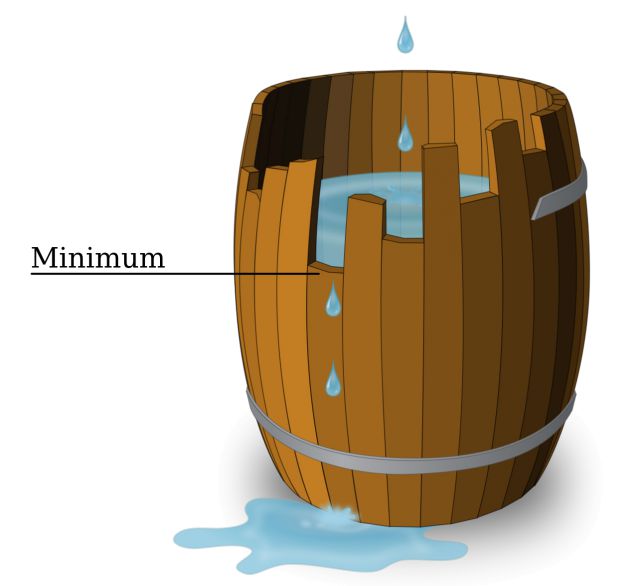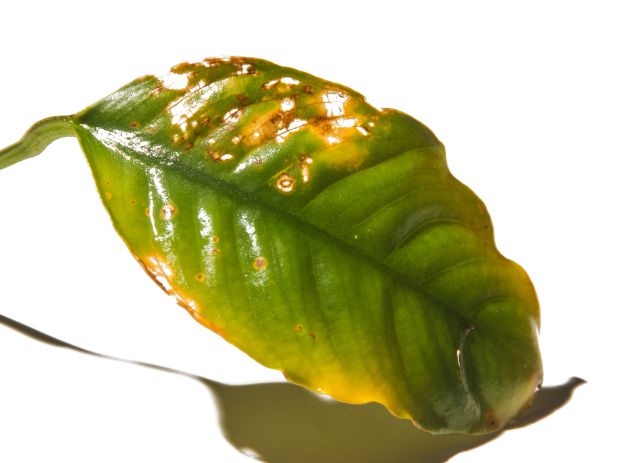The Law of the Minimum, made famous by German scientist Justus von Liebig (1803-1873), describes how plant growth is constrained by resource limitation. Plants need many different nutrients, so-called essential nutritious elements, to grow healthily. If only one of these elements is deficient, plant growth will be inhibited, even if all the other essential nutrients are available in abundance.
This is also true for all other resources such as light and apt temperatures for the respective plant species. The scarcest resource always restricts plant growth and therefore is referred to as the limiting factor.

Reference: Public Domain via Wikimedia.org
In relevant literature, Liebig’s law of the minimum is demonstrated on the model of the so-called “Liebig’s barrel”: it is shown as a barrel with staves of different height. Water runs into the barrel, but can only rise as high as the shortest stave permits, because it’ll leak from the corresponding gap. The staves represent the different nutrients and other growth factors, the shortest stave represents the limiting factor. The water level in the barrel symbolizes plant growth, which is limited by the respective minimum factor.
When applied to a planted tank or aquascape, the law of the minimum clearly shows how essential a full nutrient supply actually is to ensure healthy growth of your aquatic plants. We have covered the necessary resources in detail in our feature article on "Fertilizing a planted aquarium". The four main resources for aquarium plants are the factors light, carbon (via CO2), micronutrients and macronutrients.

If aquatic plants show signs of deficiency, maybe even in combination with intensified growth of algae, the reason is usually an imbalance in nutritional support. According to Liebig’s law, one deficient factor can be sufficient to impair the healthy growth of your aquatic plants. So, giving them more light and CO2 will not result in better plant growth if there’s just a shortage of another specific nutrient like nitrogen or iron.
As a countermeasure, the nutritional gaps need to be identified and closed. For doing so, two things are important: First of all, the water parameters need to be checked with the corresponding water tests and secondly, you should try to interpret the deficiency symptoms visible in the plants. The pattern of damage at least roughly helps assigning certain nutritional deficits. For this, we recommend the corresponding article on "Deficiency symptoms in aquatic plants".